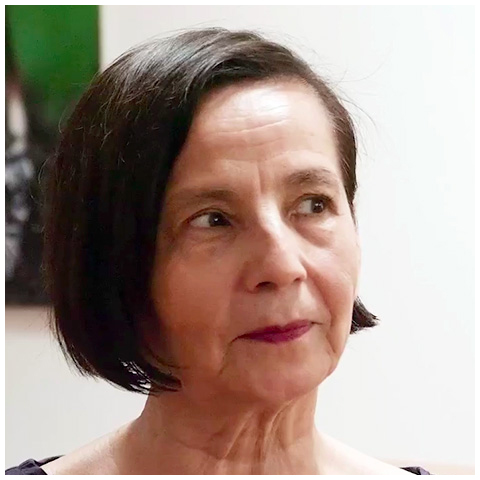

Procedente de Chillán (1949), a fines de los ´60 emigra a EEUU; ocasión en que se involucra con los movimientos feministas, los que vendrán a influenciar toda su producción artística. De perfil transdisciplinario, su obra conjuga el performance, el Fotoperformance y la fotografía, la instalación y el video, centrándose en temas de género, naturaleza y cultura mediatizada. Temas que hacen referencia a la materialidad orgánica, a lo comunitario, al cuerpo femenino frente a los mecanismos dominantes, a la tecnología y la degradación del medio ambiente.
En muchas de sus obras, el uso de la tecnología atraviesa las problemáticas del cuerpo y la ecología. En la muestra Aguas, realizada en 1991 en la University Art Museum de California, introduce una mirada crítica acerca del papel de la química fotográfica en la cadena del consumo y contaminación, refiriéndose al río Lerma en ciudad de México. En 2017, es invitada a participar en la muestra Mujeres Radicales: arte latinoamericano 1960-1985 en Hammer Museum, Los Ángeles EE UU y Pinacoteca de São Paulo, Brasil (2017-2018). Participa con una serie de Fotoperformances S/ t (1979), vinculados al cuerpo femenino y el mundo animal en los sistemas comparativos de explotación.
Coming from Chillán (1949), at the end of the 1960s she emigrates to the United States where she becomes involved with feminist movements, which will influence all her artistic production. With a transdisciplinary profile, her work combines performance, photo-performance and photography, installation and video, focusing on issues of gender, nature and mediated culture. Issues that refer to organic materiality, the community, the female body against the dominant mechanisms, technology and environmental degradation.
In many of her works, the use of technology crosses the problems of the body and ecology. In the exhibition Aguas, shown in 1991 at the University Art Museum of California, she introduces a critical look at the role of photographic chemistry in the chain of consumption and pollution, referring to the Lerma River in Mexico City. In 2017, she is invited to participate in the exhibition Radical Women: Latin American art 1960-1985 at Hammer Museum, Los Angeles USA and Pinacoteca de São Paulo, Brazil (2017-2018). Participates with a series of photo-performances S / t (1979), linked to the female body and the animal world in the comparative systems of exploitation.